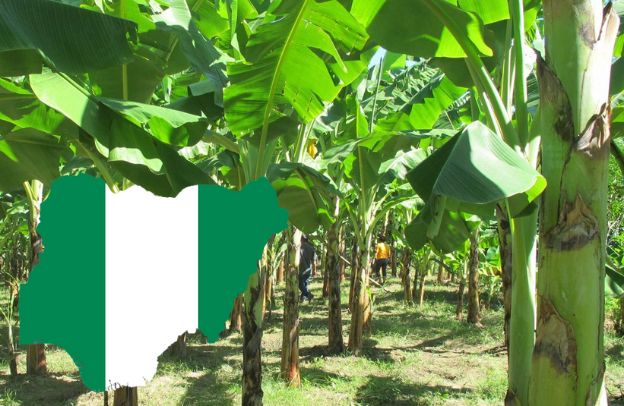Rice Production in Africa: How Government Policies and Investment Can Unlock a Billion-Dollar Opportunity

Imagine an Africa where rice is no longer imported in massive quantities, draining billions of dollars in foreign exchange. What if African nations could not only meet their domestic rice demand but also become major exporters, feeding the world while creating wealth for millions? If you’re part of the African diaspora looking to make a lasting impact on the continent, agribusiness particularly rice farming offers an unmatched opportunity.
(Learn How to Leverage Your Story through our Story to Asset Framework.)
Rice is a staple food for millions of people across Africa, yet the continent remains heavily dependent on imports. Despite having vast arable land and a growing population demanding more food, Africa imports over 17 million metric tons of rice annually, costing $6 billion (FAO, 2023).
Nigeria alone, with its massive population, spends more than $2 billion annually on rice imports despite having the potential to be self-sufficient.
But what’s stopping Africa from producing enough rice? And how can government policies and investment transform the sector? More importantly, how can you, as an African entrepreneur, tap into this opportunity to build wealth, create jobs, and contribute to food security?
The Challenges of Rice Production in Africa
Africa has everything it needs to dominate the rice industry, fertile land, a youthful labor force, and a rising middle class demanding more rice. Yet, rice farmers across the continent face numerous challenges that limit their productivity:
- Limited Access to Resources: Most rice farmers operate on small plots with minimal mechanization. They lack access to modern seed varieties, fertilizers, irrigation, and proper storage facilities.
- Low Yields and Productivity: Africa’s average rice yield is just 2.2 tons per hectare, far below the global average of 4.5 tons per hectare (AfricaRice, 2023).
- Poor Infrastructure: Weak road networks, lack of storage, and poor processing facilities lead to significant post-harvest losses. Up to 40% of harvested rice is lost before reaching the market due to poor handling and storage.
- Lack of Financing: Banks and financial institutions are reluctant to lend to smallholder rice farmers due to perceived risks, leaving farmers with limited options to scale their production.
- Dependence on Imports: Governments often rely on cheaper imported rice rather than investing in domestic production, discouraging local farmers.
See also: Rice Production in Africa: The Role of Government Policies and Investment
Boosting Rice Production in Africa is A Collaborative Approach
According to the Food and Agriculture Organization (FAO), rice consumption in Africa has been increasing at an annual rate of approximately 10%, yet 8% of that demand is met through imports—a challenge that underscores the need for strategic agricultural reforms.
To address this, the FAO’s South-South Cooperation (SSC) program has partnered with key global agricultural leaders, including China, South Korea, Venezuela, and Japan.
This initiative focuses on implementing large-scale projects designed to increase rice production and improve overall agricultural productivity in developing nations across the Global South.
These collaborations aim to not only boost production but also transform agricultural value chains, ensuring long-term sustainability, enhanced food security, and poverty reduction.
One of FAO’s notable interventions was a one-week study tour in Uganda, where officials from four West African countries, Senegal, Côte d’Ivoire, Guinea-Bissau, and Guinea Conakry, examined successful SSC projects in the region.
Through this program, local farmers have gained access to modern farming machinery, advanced technology, and training on sustainable land management practices.
Beyond increasing yields, these initiatives have also fostered job creation, empowering smallholder farmers with the tools and knowledge needed to sustain production independently. This holistic approach contributes directly to Sustainable Development Goal 2 (Zero Hunger) by improving food security, enhancing nutrition, and reducing poverty in rural communities.
Through strategic partnerships, policy support, and knowledge-sharing, the FAO’s SSC program continues to offer a replicable model for African nations striving for agricultural self-sufficiency. With increased government support and private sector investment, Africa has the potential to significantly reduce its reliance on rice imports and transform its agricultural landscape for future generations.
The Role of Government Policies in Boosting Rice Production
For Africa to become self-sufficient in rice production, strong government policies are essential. Smart policies can encourage local production, attract investment, and create a thriving rice industry. Here’s how:
1. Subsidizing Agricultural Inputs
Governments should provide affordable seeds, fertilizers, and machinery to rice farmers. Nigeria, through its Anchor Borrowers’ Program (ABP), has supported over 4 million smallholder farmers, significantly increasing local rice production (Central Bank of Nigeria, 2023). Expanding such programs across Africa could dramatically boost yields.
2. Investing in Infrastructure
Improving irrigation systems, storage facilities, and transportation networks can minimize post-harvest losses and increase farmers’ earnings. Countries like Egypt and Sudan, with advanced irrigation systems, achieve significantly higher rice yields compared to rain-fed farms in West Africa.
3. Enforcing Tariffs on Imported Rice
To protect local farmers, governments should impose higher tariffs on rice imports while supporting domestic production. When Nigeria temporarily closed its land borders in 2019, local rice production surged, proving that the right policies can encourage self-sufficiency.
Where to Invest in Africa’s Rice Sector
If you’re an entrepreneur in the African diaspora looking to enter the rice industry, consider these high-potential areas:
● Rice Farming and Large-Scale Production
With improved seed varieties and modern mechanization, rice farming is becoming increasingly profitable. Countries like Nigeria, Ghana, and Côte d’Ivoire offer vast opportunities for rice cultivation.
● Agro-Processing and Value Addition
Investing in rice milling and processing can create significant value. Instead of selling raw paddy rice, processing it into packaged rice for urban markets increases profit margins.
● Storage and Logistics
Post-harvest losses remain a major issue. Investing in modern storage facilities and transportation networks can reduce waste and improve efficiency.
Smart Agriculture and Technology
Precision agriculture, digital platforms, and AI-driven analytics are revolutionizing farming. Entrepreneurs can develop mobile apps that connect farmers to markets, offer weather predictions, and provide real-time data for better decision-making.
Export Markets
With increasing global demand for rice, African nations have the potential to enter international markets. Investing in organic and specialty rice production can create export opportunities.
Africa’s Economic Growth in 2025: Opportunities and Challenges on the Path to Recovery
Africa is set for moderate economic growth in 2025, led by key economies such as Nigeria, Egypt, and South Africa. According to the World Economic Situation and Prospects 2025 report by the United Nations, the continent’s growth is projected to rise from 3.4% in 2024 to 3.7% in 2025, with further improvement expected in 2026.
However, despite these promising forecasts, Africa remains vulnerable to high inflation, mounting debt, and climate-related risks, which continue to hinder long-term economic stability.
Global and African Economic Outlook
The global economy is expected to grow by only 2.8% in 2025, mirroring the stagnation of 2024 and falling below the pre-pandemic average of 3.2%. The UN Department of Economic and Social Affairs (DESA) emphasizes that while the world economy has shown resilience, it is still grappling with weak investment and sluggish productivity, limiting the pace of recovery.
In his foreword, UN Secretary-General António Guterres underscores the ongoing structural barriers that continue to slow economic progress, stating that “challenges persist, hindering the rate of economic advancement and the pursuit of better livelihoods for all.”
Africa’s Growth Drivers and Regional Variations
Africa’s growth trajectory is primarily driven by recoveries in major economies and ongoing regional integration efforts, particularly under the African Continental Free Trade Area (AfCFTA). The UN report highlights that:
- East Africa continues to lead with robust economic performance, benefiting from increased infrastructure investment and a dynamic service sector.
- Central Africa, on the other hand, faces stagnation due to declining oil production and ongoing political instability.
- West and Southern Africa are contending with high debt burdens, unemployment, and inflationary pressures.
- Key Challenges: Inflation, Debt, and Food Security
Inflation remains a major hurdle, with several African nations experiencing double-digit price increases. The report points out that food inflation is particularly persistent, affecting nearly half of developing economies, with rates exceeding 5% in 2024.
This trend exacerbates food insecurity, making basic necessities increasingly unaffordable for vulnerable populations.
Debt levels are another growing concern. The report highlights that interest payments consumed an average of 27% of government revenues in 2024, compared to 19% in 2019. As debt servicing costs rise, governments are left with limited fiscal space for critical investments in education, healthcare, and infrastructure—sectors essential for long-term development.
The Path Forward: Investments, Governance, and Collaboration
While Africa’s economic outlook remains positive, sustaining momentum requires targeted investments, inclusive governance, and stronger regional cooperation. The UN stresses that Strategic public and private sector investments will be crucial in closing infrastructure gaps, boosting industrialization, and fostering digital innovation.
Additionally, policy reforms that enhance economic resilience and promote equitable growth will be instrumental in ensuring Africa’s continued progress.
By addressing these structural challenges, Africa has the potential to unlock greater economic opportunities, reduce its reliance on external support, and build a more resilient and prosperous future for its people.
The Economic Potential of Africa’s Rice Industry
The African rice industry is projected to be worth $20 billion by 2030 (World Bank, 2023). With the right policies and investments, Africa could not only meet its local demand but also become a key exporter of rice globally. Consider these numbers:
Nigeria alone has the potential to produce 10 million metric tons of rice annually, yet it currently produces only around 5 million metric tons.
Ghana’s rice consumption is growing at 6% annually, creating huge opportunities for local producers.
Côte d’Ivoire is increasing investment in irrigated rice farming, aiming to reduce reliance on imports. The time to invest in Africa’s rice sector is now.
See also: Why Rice Is An African Versatile Staple Cuisine
Success Stories: How the Right Investments Are Paying Off
Nigeria’s Lagos Rice Mill, one of the largest in Africa, processes over 2.5 million bags of rice annually. Government support and private investment have fueled growth in the local rice industry, reducing import dependence.
- Mali’s Women Rice Farmers: In Mali, women-led cooperatives have transformed rice farming. With access to modern equipment and financing, they have doubled their yields, proving that empowering smallholder farmers can drive food security.
- Senegal’s Digital Rice Market: Senegal’s JokkoRice App connects farmers directly to buyers, reducing exploitation by middlemen and increasing farmers’ profits by 30%.
These stories highlight the transformative power of investment and smart policies in Africa’s rice industry.
Why This Matters to You
If you’re part of the African diaspora, investing in Africa’s rice sector is not just about profits it’s about impact. It’s about:
- Creating Jobs: A thriving rice industry can employ millions, reducing unemployment and poverty.
- Ensuring Food Security: Africa must produce its own food to be self-sufficient and resilient.
- Building Wealth: Agribusiness remains one of the most lucrative sectors for long-term returns.
You have the opportunity to be part of Africa’s agricultural transformation. Whether by investing, partnering with local farmers, or advocating for policy changes, your involvement can help reshape Africa’s future.
See also: How Technology is Improving The Production of Rice in Africa
Conclusion: The Time to Act Is Now
Africa stands at a critical juncture. With its growing population and increasing rice demand, the continent can no longer afford to rely on expensive imports. The right mix of government policies and private investment can turn Africa into a rice powerhouse.
The question is, will you be part of this transformation? Will you seize the opportunity to invest in a sector that not only promises financial rewards but also changes lives? The time to act is now. Africa’s rice revolution is waiting. Will you be a part of it?
Learn How to Leverage Your Story through our Story to Asset Framework.





